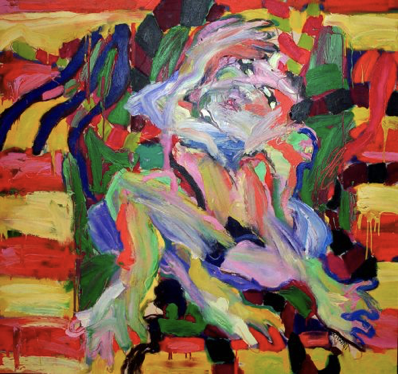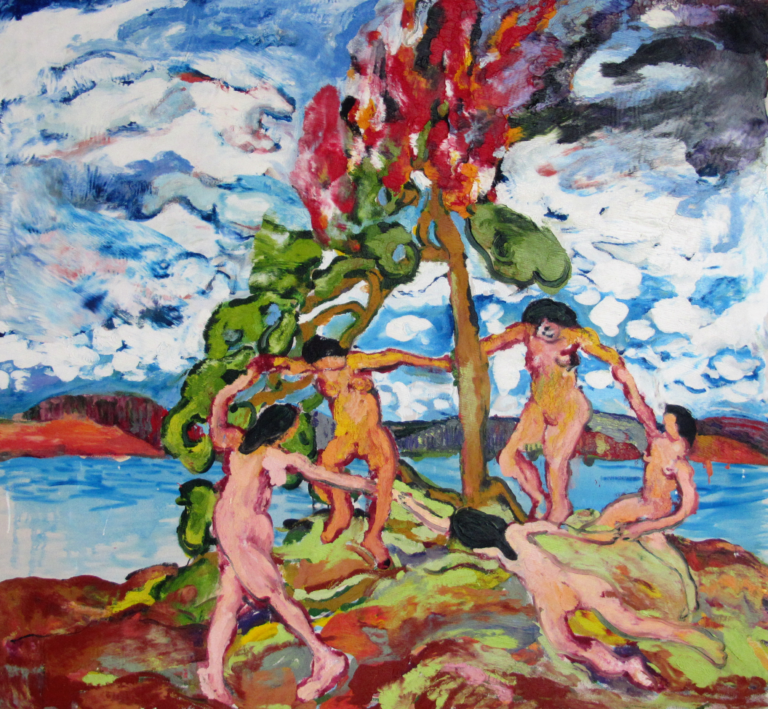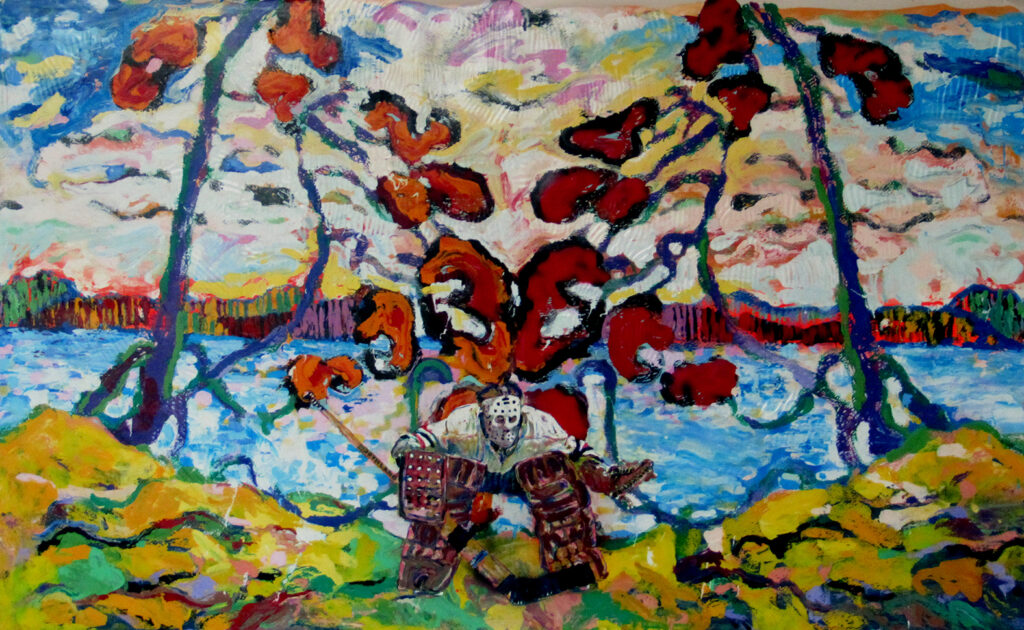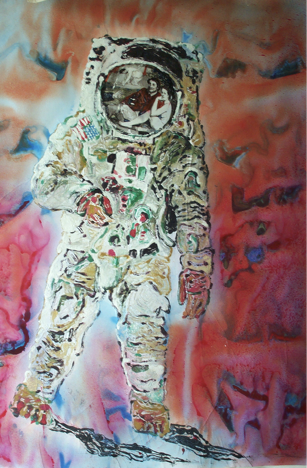by Roy Bernardi & Jennifer Leskiw

Thomas Ackermann was born in Bad Hersfeld, Germany in 1952. As a child his first major influence was a set of Bibles his mother received in trade when Thomas was just four years old. Within the Bibles were illustrations by the Old Masters, Leonardo da Vinci, Sandro Botticelli, Michelangelo, Raphael, Caravaggio, Rembrandt van Rijn, Johannes Vermeer, and Jacob Jordaens, to name a few. Thomas became enthralled with the illustrations he constantly viewed in the Bibles.
The Ackermanns immigrated to Canada in 1964 where Thomas continued his studies. As a young adult Thomas enrolled in the New School of Art as it was then called, in Toronto, Ontario. The New School of Art was an academic school under the tutelage of Dennis Burton, Robert Markle, Graham Coughtry, Gordon Rainer, David Bolduc and John MacGregor, all of which had achieved artistic success within the art world of Canada. Out of a class of 20 art students, Ackermann was the only graduate that would go on to pursue and sustain a career as a successful full-time artist.

Inspired by the famous Canadian Group of Seven, renowned for their dramatic landscapes of Ontario’s northern reflections, Thomas Ackermann worked in a spontaneous and improvisational manner focused on creating his own painting style. While the aforementioned generation drew their inspiration from the all too familiar landscapes, Ackermann was greatly influenced by the abstract style of action painting. Artists like Willem de Kooning, Jackson Pollock, Franz Kline, Robert Motherwell, Adolph Gottlieb, Ad Reinhardt, Barnett Newman and Mark Rothko became the staple of New York Abstract Expressionism. In Canada there was Harold Town, William Ronald, Ray Mead, Tom Hodgson, Kazou Nakamura, Walter Yarwood, Jock MacDonald, Alexandra Luke, Oscar Cahen, Hortense Gordon and Jack Bush, who formed the Painters Eleven. That generation introduced abstract action painting to Canada in the 1950’s, influenced by what was transcending in New York City from the New York Abstract Expressionists.
Ackermann experimented with images taken from the Impressionists and modern artists and incorporated those images with the influences of the New York Expressionists. By using his own methods and techniques, he would completely transform the image by assimilating the two styles. Early works such as “I Love M. Matisse” (1984, oil and beeswax on canvas 66” x 66”) and “Curtain Call for a Flag 1” (1984, oil and beeswax on canvas 80” x 80”) took an inspired Henri Matisse “Blue Nude” cut out image and merged it with a Willem de Kooning “Women in Landscape” image creating an assimilation of the two styles on a William Ronald backdrop.
More recent works such as “Bacchanal on Cedar Lake” (2022 oil and beeswax on canvas 55” x 60”) and “Cedar Lake Ritual” (2023 oil and beeswax on canvas 55” x 60”) where the central figures are inspired by Matisse’s “The Dance” (1910, oil on canvas) were juxtaposed over a backdrop manipulation of Tom Thomson’s “The West Wind” (1917, oil on canvas) thus forming a dramatic combination. The former, a night vision with the crescent moon lighting up the dancing figures and the latter, a cloudy day vision of the dancing figures under a burning tree.

Another recent example is “Northland” (2022, oil and beeswax on canvas 48” x 76”) where he places a central figure inspired by Canadian artist Ken Danby’s “At the Crease” (1972 oil on canvas) juxtaposed over a Rorschach backdrop manipulation of Tom Thomson’s “The West Wind” (1917 oil on canvas). Ackermann often appropriates iconic images readjusting their history into his own poignant point of view. He continuously uses an inspired image in different combinations until he has exhausted its usage.
As a painter for more than 50 years Ackermann has endeavoured to elicit a visceral experience from his paintings to the viewer. His interest is not about the motif or images used as the central focal point but more so the process of transforming the painted surface with his unique manipulation of his medium, the oil paint, thus creating a physically, stunning painting. Ackermann quoted “Half of my subject is the painting itself.” He developed a unique way of applying materials onto the canvas, in spirit, much like Jackson Pollock or Helen Frankenthaler, dripping or pouring. Ackermann uses a 600 year old medium such as oil paint, mixed with beeswax, allowing flexibility to the integrity of the paint and re-invented or altered it to suit his own unique process. He is constantly altering his methods to discover new ways and techniques in which to express his vision. His works are either highly reflective, without topical varnishes, or extremely rough and textured. In his later and more recent works, a brush has not touched the final surface.

Like many of his peers, Ackermann worked through a series of developmental phases or stages influenced by his surroundings. He began in Toronto, Ontario, moved to Spain, returned to Canada, and finally settled in the small rural town of Forest, Ontario. He has worked through different influential periods beginning with “Figurative Abstractions” (1973-1988). then transitioning to his “Spanish Paintings” during his residency in southern Spain (1988-1994). From there, on his return to Canada to Forest, Ontario, he commenced his transformation into his “Qabala” series (1994-2000). Constantly moving forward, Ackermann created “The Card Paintings”, an ambitious body of work at a grandiose scale from any previous works (2002-2004). Following this, he transitioned to works predominately on paper mounted to canvas with his “Target-ID” images taken from portraiture. He produced an oeuvre based on a photograph of “A Portrait of Apollo 11 Astronaut Buzz Aldrin”. This photograph was taken by his fellow astronaut Neil Armstrong, showing Aldrin standing on the lunar surface on July 20, 1969. By using historical and biblical imagery, one sees reflections on the astronaut’s helmet face-shield/visor creating his “Astronauts” series (2007-2009).
In later years, Ackermann became discouraged with the academics of the art world. He turned to his dark period producing a series of paintings titled “Dead Men Standing”, “The Gates of Hell” and “Fukushima”. Here he stumbled upon a new technique that would transform his work for the next several years and which has continued to this day. This discovery consisted of placing a high grade acrylic film called Duralar over an image, than peeling it off and repositioning it on a fresh canvas. This created a soluble transfer which allowed him to not only paint one image but to transfer it to other canvases creating paintings from one master image. Ackermann further discovered that the longer he left the high grade acrylic film cover on the painting, the more plastic in nature the surface would become, and remain to the point where the surface looked as if the image was behind plexiglass, when in fact it is the actual paint surface. One only needs to look at the surface of any one of his paintings to visually see the quality and aspects of the applied oil paint to the canvas revealing the genius of a true master.
